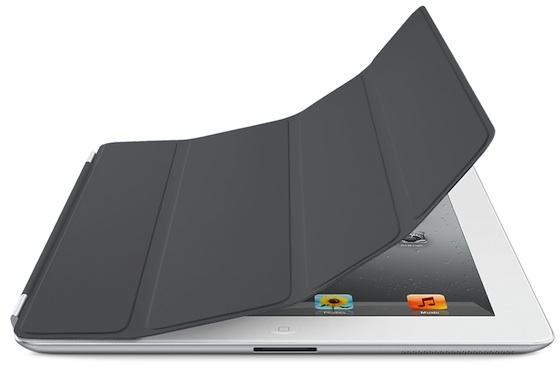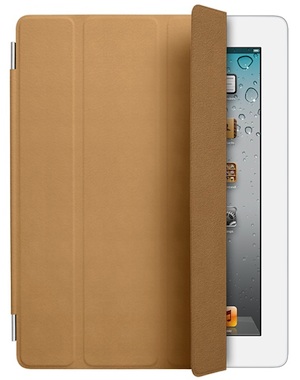For kids, learning the alphabet isn't exactly as easy as A-B-C. While you and I may have mastered the alphabet from books or television, children today are just as likely to study letters and their sounds with the magical multitouch device that is the iPad. My daughters (ages 4 and 2) helped me test three ostensibly educational apps. Our questions: Are they really teaching the kids anything? And perhaps even more importantly, are they fun?
What to look for
My kids are iOS pros. They can unlock an iPad, swipe between screens, and launch the app they're after. The best kid-focused apps offer simple navigation, clear instructions, and easy targets for little hands to manipulate.
Apps that purport to help my kids master the alphabet should do all that and more. Beyond offering fun, engaging visuals, they should employ both lowercase and uppercase letters, associate letters with their sounds, and ideally not feel too repetitive (and thus unworthy of repeat launching).
ABC Expedition
The first app my kids and I tried out together was ABC Expedition ( Macworld rated 4 out of 5 mice ). The $3 game from developer Meldmedia stars Captain Wallace, an accented character (of the non-typographic variety) who leads an alphabet expedition through a virtual zoo. The app's main menu presents a grid of colorful, clear capital letters; tapping on any visits the animal whose name begins with that letter. The approach is somewhat similar to Safari Animals HD ( Macworld rated 3 out of 5 mice ), another animal-themed ABC app that suffered from some navigation limitations when I reviewed it recently. (The Safari Animals HD 1.1 update, released after my review, added sorely needed bidirectional navigation.)
Because of the limits of the English language, some letters in ABC Expedition link to less well-known animals--or at least ones that are a bit unlikely to appear in a real zoo. But the narwhal (for the letter N), urial (U), and x-ray fish (X, naturally) are just as charming to visit as the lion (L) and the monkey (M), so it's not a problem.
When you tap a letter, the delightfully drawn animal appears with an animated entrance, accompanied by realistic sound effects: the koala grabs some leaves to eat, and the rhinoceros runs around the screen before bumping into the R. Each animal is presented with upper- and lowercase representations of its initial letter, along with the written name of the animal in question.
Once the animal's entrance animation is complete, you can tap the animal to trigger its sound effect, tap the capital letter to hear it pronounced by Captain Wallace, tap the lowercase letter to hear it pronounced by a similarly chipper kid, or tap the animal's name to hear Captain Wallace say it aloud. Frustratingly, to me and the kids alike, you can't tap on any of those things‚--or tap buttons to navigate to other letters or back to the main menu--until the animal's entrance animation completes.
ABC Expedition's other flaws are minimal: The app shows buttons to go forward and backward to the next letters, even on A and Z, where half of those buttons have no effect. And my kids, who are accustomed to kid-friendly e-books, kept trying to swipe to turn pages, instead of tapping those buttons. Regardless, the drawings are adorable and the speech is clear. While ABC Expedition's gameplay is repetitive, my kids enjoyed it, and it's cute enough to avoid driving their parents crazy.
ABC Go
ABC Go ( Macworld rated 4 out of 5 mice ), a $2 universal app from Peapod Labs, takes a very different approach. The app launches with a massive, vertically scrolling alphabetical grid. Kids can tap on any of the squares--some of which preview their contents, but most of which don't--to see objects that start with the corresponding letter.
Once you're on that object, you have plenty of options. For example, we tapped on B, and were presented with a colorful, full screen image of bumper cars. Tiny characters--whom ABC Go dubs Little Explorers--hold up signs that spell out the word(s). Swiping reveals another picture of bumper cars; swiping again reveals a third. Many photos (including each of the three bumper car images) are also linked to videos. Tapping the video button plays an embedded YouTube video--pre-screened for appropriateness by Peapod Labs--on the topic. Tapping the exclamation point button displays a factoid ("Bumper cars draw power from the floor and/or ceiling of the track, and they can be turned on and off remotely by an operator"), which my own kids quickly learned never to bother with. After swiping past the last of the bumper cars, we were guided directly into the app's showcase for its next entry: bus.
But you needn't navigate alphabetically. Tapping any of the letters in the written word--say, the "s" in "bus"--instantly transports you to a new object. In this case, that would be "steamroller."
I vacillate on whether the app's high quantity of more unusual words is a feature or a detraction. There are many words your kids likely won't hear much elsewhere ("gondola," "hovercraft," "maglev," "omnibus," "quad bike", "news van," "xtrapolis"), which might broaden their horizons, or might leave them a bit confused. (Peapod offers a similar app called ABC Wildlife that showcases animals instead of means of transportation; the words in that app are a bit more accessible overall.)
Regardless, my kids love ABC Go. I'd love an option to turn off the videos; we limit our kids' video-watching time, and my four-year-old sometimes likes to use ABC Go for noun-based channel surfing. And the app's endless musical backing track can start to grate after its dozenth loop. These quibbles aren't major, though. The pictures are great and engaging, the words are pronounced clearly with focus on their initial sounds, and the app is a snap to navigate.
Alpha Writer
The last app my kids and I looked at was the $5 Alpha Writer ( Macworld rated 3.5 out of 5 mice ), a universal app from Montessorium. This one's fairly different from the other two, and while both my daughters had some fun with it, only my 4-year-old really understood the app's focus. It's meant for kids who are learning to read, to help them practice forming words.
The app has two modes. In Alpha mode, you're presented with a grid of 50 colorful icons--a lamp, a dog, a jet, and more. Tap one, and you land on a new screen featuring that object, a horizontally scrolling alphabet, and not much else.
A pleasant female voice announces the object's name ("lamp,") and then pronounces it again, focusing on the phonetics ("ull a mmm puh"). You're meant to drag letters down from the horizontal strip to anywhere on the screen, to spell out the word you're hearing. Drag down the wrong letter, and you're very subtly coached ("I hear 'ull a mmm puh'"). You can drag erroneous letters back up to the bar to discard them. (Mercifully, the voice over artist in Alpha Writer shares none of the qualities of the grating narrator in Mathaliens HD. [ Macworld rated 3 out of 5 mice ])
As you drag letters down, you hear their sounds voiced. The app doesn't offer any additional corrections or help; this is really an educational tool meant to be used by you and your kids together. When you tap the checkmark to indicate that you've finished spelling a world, there's no overt indication of whether you've spelled the word correctly or not. (In truth, the app only repeats the name of the word you've spelled when you press the checkmark if it's spelled correctly, but that's a very subtle cue.) With some words, like "ship," Alpha Writer wants kids to figure out the "sh" sound, but of course the "s" and the "h" don't make those sounds when tapped individually. Again, while you can certainly hand this app off to your kids if you want to distract them for a few minutes, you'll want to instead stay by their side if you're hoping to teach them something.
In the app's second mode, Writer, kids can create "storyboards" by dragging objects and letters onto the screen. You can resize and reorder each object, and then invent whatever narrative you'd like to accompany your storyboard. My 4-year-old loved this part.
My kids and I encountered a couple freezes with Alpha Writer on occasion, where the game stopped responding until we restarted it. But on the whole, it's very well-designed and smartly implemented. I don't mind sitting by my daughter's side as she uses the app, though I do wish the game would provide more kid-friendly feedback on how the child is doing.
Other options
Alpha Writer employs the same design aesthetic as Montessorium's Intro to Letters ( Macworld rated 4 out of 5 mice ) app, and it works just as beautifully here. Intro to Letters focuses on recognizing and drawing the characters, while Alpha Writer's focus is more on putting those letters together to make words.
Still, if you're looking for an app to teach kids how to draw their ABCs, Intro to Letters is a solid option. The app features a lovely design with beautiful letters against beautiful backgrounds. Coupled with the app's pleasant female narrator, the overall experience of the app is likable, if a bit dry. If you're looking for a more game-like experience, you won't find it with Intro to Letters.
If you're looking for a more fun approach to practicing letter writing, try the aptly named Alphabet Fun ( Macworld rated 4 out of 5 mice ). In the app's letter mode, tapping on any letter in the alphabet brings up a screen featuring a colorful drawing of an animal whose name starts with that letter. From there, you can trace the letter and words or practice freeform writing. Alphabet Fun lets kids pick from a variety of virtual crayons and colored pencils. (The app also features numbers and color modes.)
The apps we've looked at here focus more on learning and practicing letters. But for just enjoying a good alphabet-themed story, you can't go wrong with Dr. Seuss's ABC Macworld rated 4.5 out of 5 mice . It's a great adaptation of the classic children's book, done with the same commitment to quality Oceanhouse Media has demonstrated with its other iOS versions of Dr. Seuss books.
Final thoughts
Here's the good news: All of these alphabet apps are very good. If you're looking for apps to keep your kids entertained on their own, ABC Go is the best choice, but it functions a bit more like a game than an educational tool. Alphabet Fun offers an enjoyable way of practicing letters. ABC Expedition, on the other hand, really drills letter sounds while remaining entertaining--though with just 26 animals to page through, it can feel repetitious.
The most educational of the apps included here are Montessorium's offerings. But remember that Alpha Writer in particular really requires that you sit with your kids to help them practice spelling and sounding out words with the app.
Source : PCWORLD | By Lex Friedman
Original Content: IPad Apps Help Kids Master the Alphabet


